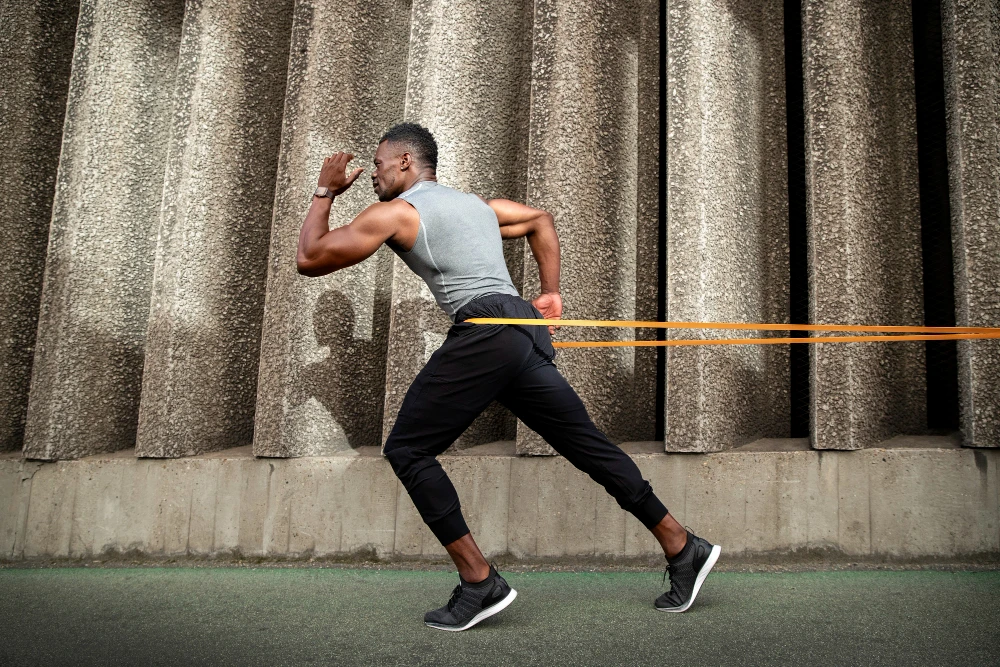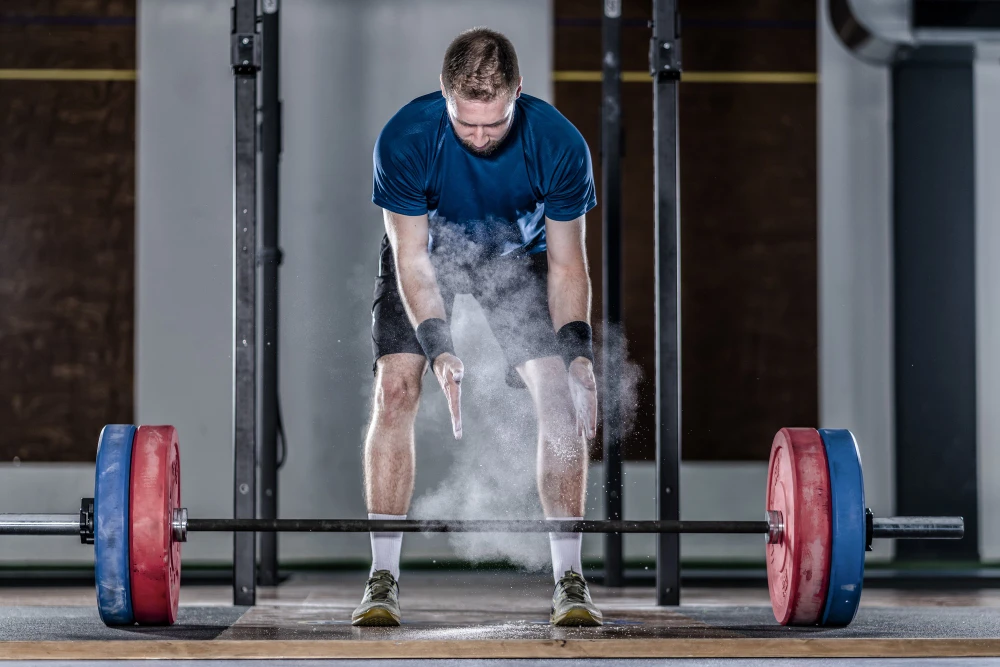What is Split Training?
Split training is a workout routine that involves targeting specific muscle groups on different days. This allows for more focused and intense training but requires more time and effort than full-body workouts. It’s popular among bodybuilders and fitness enthusiasts wanting to build muscle mass and strength.How Does Split Training Work?
Split training means focusing on specific muscle groups during each workout session, allowing them to recover before working again. The frequency and routine of split training depend on individual goals. Popular routines include upper/lower body splits, push/pull splits, and body part splits.
Benefits of Split Training
Split training is a workout routine that divides the body into different muscle groups and trains each group on a different day. This allows for more focused training and allows each muscle group to have more time to recover.
There are many benefits to split training, including:
- Increased muscle mass: Split training allows you to train each muscle group with more intensity, which can lead to greater muscle growth.
- Improved strength: Split training can also help you to improve your strength by allowing you to lift heavier weights with each muscle group.
- Increased muscle definition: Split training can help to increase muscle definition by allowing you to target each muscle group with more precision.
- Reduced risk of injury: Split training can help to reduce the risk of injury by allowing each muscle group to have more time to recover.
- Improved flexibility: Split training can also help to improve flexibility by allowing you to focus on stretching each muscle group.
If you are looking to build muscle, improve strength, and increase muscle definition, split training is a great option. However, it is important to note that split training is not right for everyone. If you are new to exercise, it is best to start with a full-body workout routine. As you become more experienced, you can then switch to a split training routine.
Full-Body Split
Working all major muscle groups in a single training session can be possible through full-body split workouts. Ideal for beginners or those who want to maintain overall fitness due to its time-efficiency. However, achieving specific body part goals or increasing muscle mass might not be the best outcome with this type of split training. A sample full-body split routine includes compound movements like squats, deadlifts, bench press, shoulder press and pull-ups that target multiple muscle groups at one go. Varying these exercises would help overcome plateaus while allowing enough time for recovery between workouts.

What is a Full-Body Split?
A Full-Body Split is a workout that targets all major muscle groups in one session. It’s great for beginners or those with limited time, providing enough frequency to promote growth and reduce injury risk. However, advanced lifters may need higher intensity and volume for optimal results.
Who Should Try a Full-Body Split Routine?
A full-body split routine involves exercising all major muscle groups in one session, making it suitable for beginners and those with limited time. It can enhance strength, endurance, weight loss, and muscle building. To prevent overworking specific muscles, vary exercises and rest periods.
Sample Full-Body Split Routine
- Upper/Lower Split
The Upper/Lower Split routine is a popular way to train your entire body while focusing on specific muscle groups. This type of training involves working the upper body muscles on one day and the lower body muscles on another. It’s ideal for intermediate to advanced lifters looking to build strength gains, muscle hypertrophy, or endurance. Beginners should approach this split with caution as it can be challenging. Varying exercises, incorporating compound movements like squats and deadlifts, and giving yourself adequate rest days are crucial to achieving optimal results without risking injury. A personal trainer or sports medicine professional can help you design a safe and effective training program.
What is an Upper/Lower Split?
An Upper/Lower Split is a workout routine that divides workouts into upper and lower body days, allowing for better muscle group focus and improved results. It’s ideal for beginners or those seeking to build strength and muscle mass. To avoid overuse injuries and plateaus, vary exercises and reps, and include rest days for proper recovery.
Who Should Try an Upper/Lower Split Routine?
The upper/lower split routine is best suited for athletes, bodybuilders, and fitness enthusiasts who want to concentrate on specific muscle groups and build strength. It provides targeted training sessions, better recovery time, and prevents burnout or overtraining. However, beginners or those with limited time may find it difficult to follow a structured workout schedule.
- Push, Pull, and Legs Split
Push, Pull, and Legs Split is an effective type of split training that focuses on one major muscle group at a time. By alternating between push exercises (such as bench press or shoulder press), pull exercises (such as pull-ups or curls), and leg exercises (such as squats or lunges), you can maximize muscle growth while minimizing the risk of injury.
What is a Push, Pull, and Legs Split?
Push, Pull, and Legs split is a training method that targets specific muscle groups on separate days. The “push” day emphasizes chest, shoulders, and triceps, while the “pull” day engages back and biceps. The “legs” day works the lower body muscles for balanced training and injury prevention.
Who Should Try a Push, Pull, and Legs Split Routine?
The push, pull, and legs split routine is beneficial for individuals of all levels, including beginners and experienced lifters. It permits muscle targeting without overtraining and can lead to improved strength, muscle mass, and overall fitness. However, proper form is crucial to avoid injury. It’s recommended to seek guidance from a fitness professional before starting any new workout program.
Choosing the Best Split Routine for Your Goal
There are many different split routines available, and the best one for you will depend on your goals, experience level, and available time. Here are a few things to consider when choosing a split routine:
- Your goals: Are you looking to build muscle, lose weight, or improve your strength? Different split routines are better suited for different goals. For example, if you’re looking to build muscle, you’ll want to choose a routine that focuses on compound exercises that work multiple muscle groups at once.
- Your experience level: If you’re a beginner, you’ll want to choose a split routine that is easy to follow and doesn’t require a lot of equipment. As you become more experienced, you can switch to a more challenging routine.
- Your available time: How much time do you have to work out each week? If you’re short on time, you’ll want to choose a split routine that allows you to get a full workout in a short amount of time.
Here are a few examples of split routines that are effective for different goals:
- Full-body routine: This is a good option for beginners who are short on time. It involves working all of the major muscle groups in one workout.
- Upper-lower split: This is a good option for people who are looking to build muscle and strength. It involves working the upper body on one day and the lower body on the next day.
- Push-pull split: This is a good option for people who are looking to build muscle and improve their strength. It involves working the pushing muscles (chest, shoulders, triceps) on one day and the pulling muscles (back, biceps) on the next day.
- Legs-push-pull split: This is a good option for people who are looking to build muscle and improve their strength. It involves working the legs on one day, the pushing muscles on the next day, and the pulling muscles on the day after that.
No matter which split routine you choose, it’s important to be consistent with your workouts and to eat a healthy diet. With hard work and dedication, you’ll see results.
Here are some additional tips for choosing the best split routine for you:
- Talk to a personal trainer or fitness instructor. They can help you assess your goals and experience level and recommend a routine that is right for you.
- Read online reviews of different split routines. This can give you a good idea of what other people have experienced with different routines.
- Experiment with different routines until you find one that you enjoy and that helps you reach your goals.
Split Routines for Hypertrophy
For those looking to build muscle hypertrophy through resistance training, incorporating split routines into your training program can be effective. Advanced lifters who have already achieved strength gains and want to target specific muscle groups can make use of split routines by working on one or two muscle groups per workout session. By doing so, you can ensure a focused and more intense workout for the targeted muscles. However, beginners should consider full-body workouts that target all major muscle groups to prevent the risk of injury and improve endurance. Remember to include stretching and yoga in your routine to improve range of motion and reduce the risk of injury.
Split Routines for Strength
To improve strength gains, Split Routines for Strength training split involve intense workouts of one or two muscle groups per session. However, this type of training program requires proper planning as it may lead to muscle imbalances if not done correctly. To avoid plateaus, target all major muscle group through compound movements like squats and deadlifts. To make the most out of your workout routine, consult with a personal trainer or fitness expert to design a program that suits your body composition and goals. Keep in mind that rest day, stretching and yoga are also essential for full-body recovery.
Split Routines for Fat Loss
Effective fat loss can be achieved through split training that targets specific muscle groups and increases workout intensity. Upper/lower body splits or push/pull splits are commonly used for fat loss training programs. Combining your split routine with a balanced diet and proper rest is essential to see optimal results in terms of body composition changes. To ensure that your program is safe and effective you should consult with a fitness professional before starting any new workout routine.
Let’s Sum Up
Split training is a great way to target specific muscle groups and achieve your fitness goals. Whether you’re looking to gain strength, build muscle, or lose fat, there’s a split routine that can work for you. However, it’s important to consider the pros and cons of each type of split routine before deciding which one is best for you.



